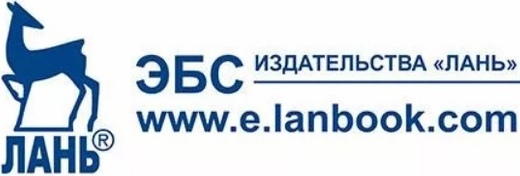The mediatized discourse of Orthodox students about the Russian Orthodox Church
The article is devoted to the analysis of the modern Orthodox conservative mediatized discourse among student bloggers on the Telegram messenger platform. The relevance of the study lies in the lack of development of both the topic of mediatization of Orthodoxy and the topic of studying Orthodox conservatism in modern sociology. The study of this phenomenon in the work took place through the prism of a conceptual approach, which received the name "mediatization of religion" in scientific sociological literature. The scientific problem is that studies of the mediatization of Orthodoxy are no longer a new field, but their number is still small. A large number of religious groups that are currently forming and functioning are outside the field of view of researchers. The figurative approach, which took shape in the German school of studying mediatization, was chosen as the research method. The figurative approach re-actualizes the concept of “figuration” by Norbert Elias and considers modern communicative figuration in media through four components: communicative practices, media ensemble, frame of relevance and constellation of actors. The communicative figuration of modern Orthodox conservatism in the Telegram messenger was taken as the basis of our study, since this platform provides opportunities for discussion on social and theological issues. The purpose of the article is to describe this communicative figuration through its four components. In this regard, the objectives of the study were: a description of the context of formation and features of the modern stage of studying the mediatization of Orthodoxy; a characteristic of the 4 components of the communicative figuration of modern Orthodox conservatism among young people. The empirical part of the study was based on a series of expert, semi-structured interviews with the authors of Telegram channels included in the youth category and who are students of higher educational institutions. In total, 30 interviews were collected from March to August 2024, of which 5 were selected for the article. The results of the study demonstrated that at the moment there is a constellation of actors of modern Orthodox conservatism, in the youth pole of which a group of students can be distinguished. Orthodox conservative students build their own identity, based on the Orthodox tradition, but only in the form of moral prescriptions. They are practically not integrated into the existing structures of the Russian Orthodox Church. The frame of relevance of the communicative figuration of Orthodox conservatism considers Orthodoxy as an integral part of modern Russian culture and humanitarian science. But in the frame, there is also an opposition to liberalism, including church liberalism, which occurs on issues of the foundations of society.
Kovalenko, V. D. (2024), “The mediatized discourse of Orthodox students about the Russian Orthodox Church”, Research Result. Sociology and Management, 10 (3), 36-51, DOI: 10.18413/2408-9338-2024-10-3-0-3.


















While nobody left any comments to this publication.
You can be first.
Golovushkin, D. A. (2018), “Sovremenny pravoslavny fundamentalizm or psevdofundamentalizm?”, Izvestya Irkutskogo Gosudarstvennogo Universiteta. Serya: politologya. Religiovedenie, 25, 92-102. (In Russian)
Kovalenko, V. D. (2023), “Mediatizatsiya pravoslavya kak issledovatelskoe pole”, Kontsept: filosofya, religya, kultura, 7 (4), 76-97. (In Russian)
Kovalenko, V. D. (2024), “Mediatizirovannoe pravoslavie v sotsialnykh setyah organov ispolnitelnoy vlasti SZFO v epokhu COVID-19”, Politika i Obshhestvo, 2, 63-76. (In Russian)
Laker, U. (1994), Chernaya sotnya. Proiskhozhdenie russkogo fashizma [The Black Hundred. The Origin of Russian Fascism]. (In Russian)
Lebedev, S. D., Sklyarova, V. A. (2019), “The social demand for knowledge about religion in modern Russian society in the assessments of experts”, Nauchny rezultat. Sotsiologiya i upravlenie, 5 (2), 25-36. (In Russian)
Ostrovskaya, E. A. (2019), “Mediatizatsiya pravoslaviya – eto vozmozhno?” Monitoring, (5), 301-319. (In Russian).
Ostrovskaya, E. A. (2022), “Alternative media discourse about the Russian Orthodox Church: Orthodox Telegram channels”, Monitoring, (2), 454-475. (In Russian)
Shnirelman, V. (2017), Koleno Danovo: eskhatologya i antisemitizm v sovremennoy Rossii [The Danovo Tribe: Eschatology and Anti-Semitism in Modern Russia], Moscow, Izdatestvo BBI. (In Russian)
Adamsky, D. (2019), Russian Nuclear Orthodoxy: Religion, Politics, and Strategy. Redwood City: Stanford University Press.
Ammerman, N. T. (1990), Baptist Battles: Social Change and Religious Conflict in the Southern Baptist Convention. Rutgers University Press, New Brunswick and London.
Anderson, J. P. (2013), “Rocks, Art, and Sex: The “Culture Wars” Come to Russia?”, Journal of Church and State, 55 (2), 307-334.
Chebankova, Е. (2018), Reflections on cross-currents of Russian conservatism, In Garnett M. (ed.) Conservative Moments Reading Conservative Texts, Bloomsbury academic, London; New York.
Cottle, S. (2006), Mediatized Conflict: Developments in Media and Conflict Studies, Maidenhead: Open University Press.
Couldry, N. and Hepp, A. (2017), The mediated construction of reality, Polity Press, Cambridge.
Goffman, E. (1974), Frame analysis: an essay on the organization of experience, Harvard University Press, Cambridge, MA.
Hepp, A., Hasebrink, U. (2014), Human interaction and communicative figurations. The transformation of mediatized cultures and societies, in Lundby K. (ed.) Mediatization of Communication.
Jin, D. Y. (2015), “The Mediatization of Buddhism in Digital Media: The Contemporary Reflection of Uisang’s Hwaom Thought”, Journal of Media and Religion, 14(4), 196-210.
Kołodzieyska, M., Fajfer, Ł., Hall, D. and Radde-Antweiler, K. (2022), “Religious media settlers in times of deep mediatization”, Religion, 53(2), 199-223.
Morley, D. (2007), Media, modernity and technology: The geography of the new, Routledge, London/New York.
Peretz, D. (2024), The Mediatization of Jewish–Muslim Dialogue in Germany Amid COVID-19, Contemporary Jewry.
Riccardi-Swartz, S. (2021), American Conservatives and the Allure of Post-Soviet Russian Orthodoxy. Religions, 12(12):1036.
Schimank, U. (2016), Handeln und Strukturen. Einführung in die akteurtheoretische Soziologie, Auflage, Beltz Juventa (Weinheim und Basel).
Stępniak, K. (2023), Communicating the sacred in religious advertising in light of the mediatization of religion theory and research on digital religion. Church, Communication and Culture, 8 (2), 285–307.
Stoeckl, K., Uzlaner, D. (2022) The Moralist International: Russia in the Global Culture Wars. 1-st ed. Fordham University Press.
Suslov, M. (2014), “The Holy Rus: The Geopolitical Imagination in the Contemporary Russian Orthodox Church”, Russian Politics and Law, 52, 57
Wuthnow, R. and Lawson, M. P. (1994), Sources of Christian Fundamentalism in the United States Accounting for Fundamentalisms in Marty, M. E. and Appleby, R. S. (ed), The Dynamic Character of Movements, The University of Chicago Press.
Zeiler, X. (2014), The global mediatization of hinduism through digital games: representation versus simulation in hanuman: boy warrior, in Campbell, H. A. and Grieve, G. P. (eds.), Playing with Religion in Digital Games.